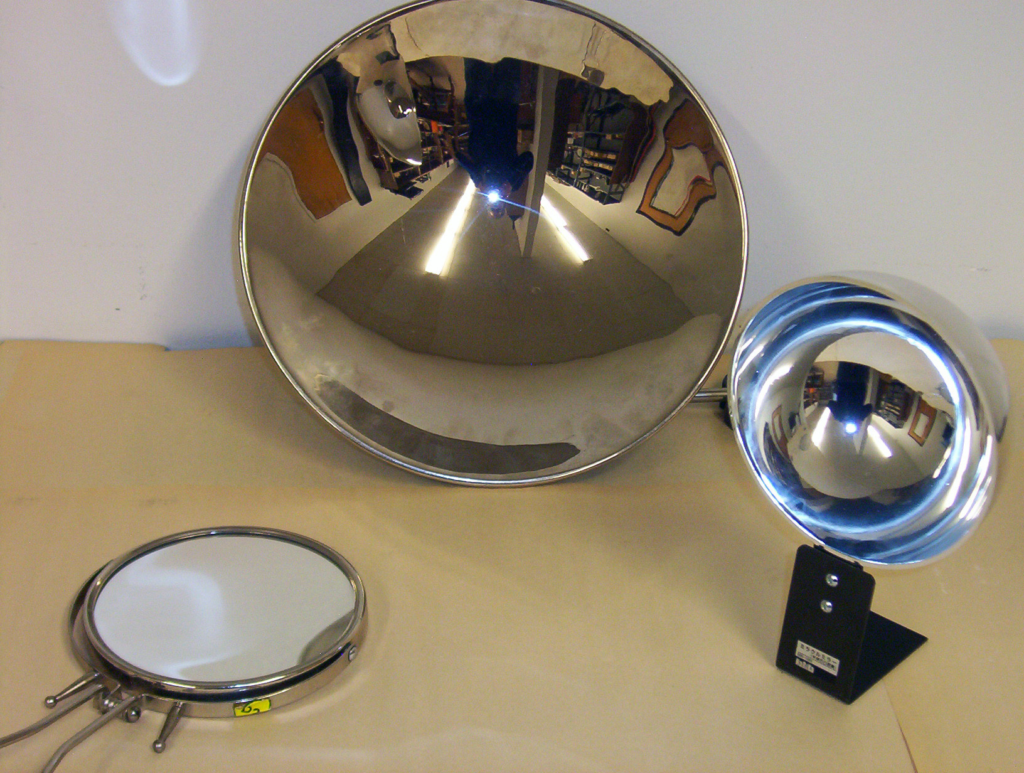Playing With Spherical Mirrors
Key Notes :

Spherical Mirrors
Introduction to Spherical Mirrors:
- Spherical mirrors are curved mirrors with either a concave or convex shape.
- They have a reflective surface on the inside (concave) or outside (convex) of a sphere.
Types of Spherical Mirrors:
- Concave Mirror:
- Curved inward like the inside of a spoon.
- Reflects light inwards towards a focal point.
- Used in things like makeup mirrors and telescopes.
- Convex Mirror:
- Curved outward like the back of a spoon.
- Diverges or spreads out light.
- Commonly found in car side-view mirrors to provide a wider field of view.
Terminology:
- Center of Curvature (C): The center of the sphere from which the mirror is cut.
- Focal Point (F): The point where all parallel rays either converge (concave) or appear to diverge (convex) after reflecting.
- Principal Axis: The imaginary line passing through the center of curvature and the midpoint of the mirror.
- Aperture: The diameter of the mirror.
Reflection Rules:
- Concave Mirror:
- Rays parallel to the principal axis converge at the focal point (F).
- Rays passing through the focal point (F) become parallel after reflection.
- Rays passing through the center of curvature (C) reflect back on themselves.
- Convex Mirror:
- Rays parallel to the principal axis appear to diverge from the focal point (F) behind the mirror.
- Rays diverging from the focal point (F) appear parallel after reflection.
- Rays that strike the mirror reflect outward.
Image Formation:
- Concave Mirror:
- Real and inverted image when the object is beyond the focal point (F).
- Virtual and upright image when the object is between the focal point (F) and the mirror.
- Convex Mirror:
- Always forms a virtual, smaller, and upright image, regardless of the object’s position.
Mirror Equations:
- Concave Mirror:
- The mirror equation is 1/f = 1/v + 1/u, where:
- f is the focal length.
- v is the image distance.
- u is the object distance.
- The mirror equation is 1/f = 1/v + 1/u, where:
- Convex Mirror:
- For convex mirrors, the focal length (f) is negative.
Magnification (m):
- Magnification (m) = Height of Image (hi) / Height of Object (ho).
- m > 1 for a magnified image, m < 1 for a reduced image, and m = 1 for the same-sized image.
Applications:
- Concave mirrors are used in makeup mirrors, telescopes, and satellite dishes.
- Convex mirrors are used in car side-view mirrors and security mirrors.
Safety Tips:
- Do not direct sunlight onto objects using concave mirrors as they can cause fires due to the concentration of sunlight.
- Use safety precautions while handling mirrors to avoid breakage and sharp edges.
Let’s practice!

